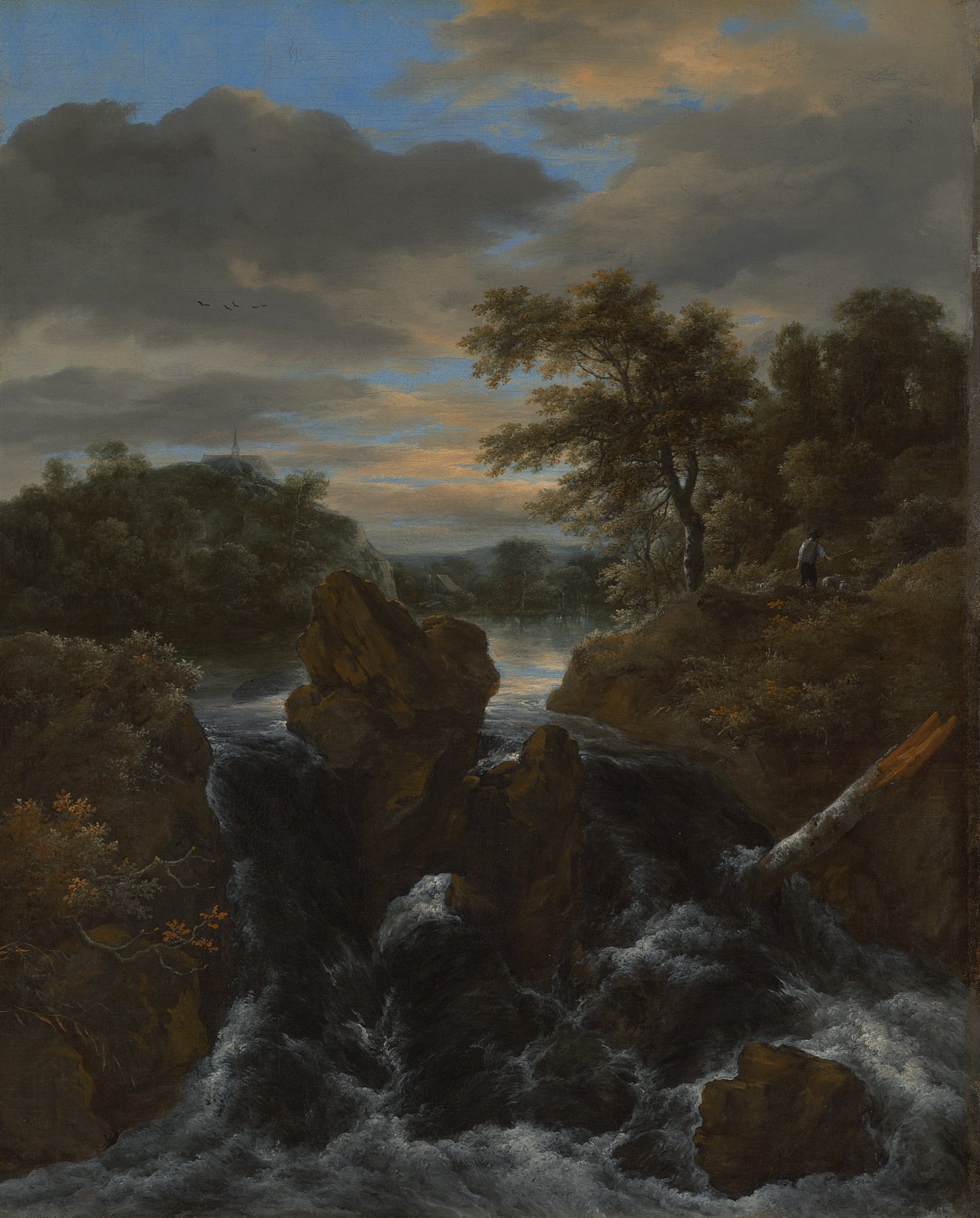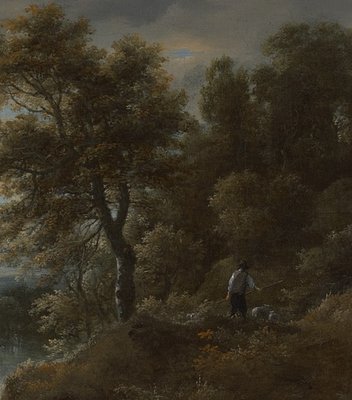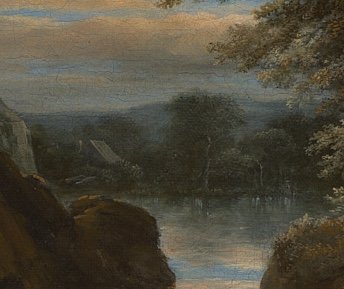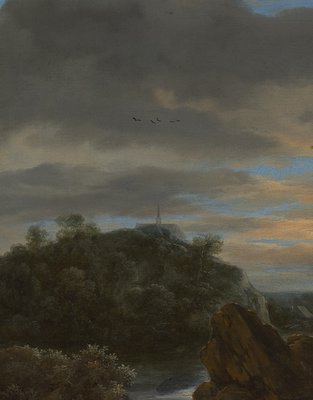Jacob Isaacksz. van Ruisdael
Landscape with waterfall, around 1670/1675

Jacob Isaacksz. van Ruisdael
Landscape with waterfall, um 1670/1675
Kunst Museum Winterthur, Schenkung der Stiftung Jakob Briner, 2018
Foto: SIK-ISEA, Zürich (Martin Stollenwerk)
Jacob van Ruisdael was one of the most innovative European landscape painters. He belonged to the first painters who regarded the landscape as a mirror of life and transience. Especially in his later work Ruisdael depicted waterfalls in the mountains time and again. They are a sign of the passing of time, just as the foam and the fallen trees symbolise ephemerality.
These vanitas motifs are opposed to the lovely landscape beneath a warm evening sky. Three phases of the human development are presented here: the shepherd with his sheep embodies a self-sufficient life, completely in nature. The house in the background stands for a settled way of life, based on work and craftsmanship. Finally, the church indicates a contemplative, religious perspective on the world. Precisely by including time and its passing, Ruisdael’s painting gains a spiritual dimension, which was also recognised by Goethe, who described the painter «as a thinking artist, even a poet».
Exotic natural elements, such as waterfalls, jagged rocks and mountains, were very popular in the Netherlands. Allart van Everdingen, a colleague of Ruisdael’s, had introduced the foreign subjects to Dutch painting after a trip to Norway. Ruisdael adapted the Nordic character and found therein a very personal, distinctive visual vocabulary. In this way he had a profound influence, not only on Dutch painting, but also on all Northern European painting up to the landscape painting of German Romanticism.
Exotic natural elements, such as waterfalls, jagged rocks and mountains, were very popular in the Netherlands. Allart van Everdingen, a colleague of Ruisdael’s, had introduced the foreign subjects to Dutch painting after a trip to Norway. Ruisdael adapted the Nordic character and found therein a very personal, distinctive visual vocabulary. In this way he had a profound influence, not only on Dutch painting, but also on all Northern European painting up to the landscape painting of German Romanticism.





